
La Earthcache / The Earthcache
► Contexte géologique local
Le coteau surplombant Marcoussis côté nord est constitué de deux formations sédimentaires détritiques mises en place au Stampien supérieur (-35 Ma) lors d'une transgression marine.
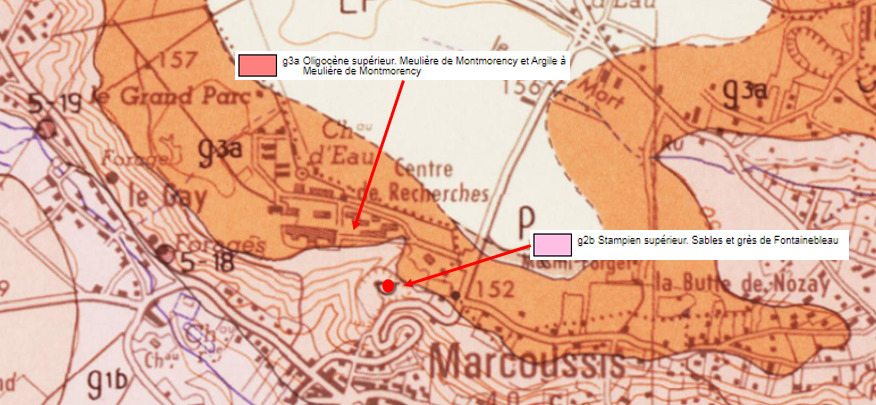
Ces deux formations ont fait l'objet d'exploitations de carrières sur ce côteau, mettant à nu de vastes blocs dont il est possible aujourd'hui d'observer les particularités.
► Formation g3a : Les pierres meulières de Montmorency
Cette formation sommitale dure recouvre les sables et grès de Fontainebleau et les protègent de l'érosion. Elle est principalement constituée de deux ensembles de pierres meulières.
La pierre meulière est une roche sédimentaire siliceuse avec silicification irrégulière de calcaires.
Elle est extrêmement solide car très riche en silice, insensible à l’altération de l’eau de pluie, imperméable et poreuse.
Elle peut être massive (meulière compacte) ou alvéolaire (meulière caverneuse formée par dissolution du calcaire), ces deux types étant présents sur les coteaux de Marcoussis :
- A la base se trouve une première strate de 2 mètres de puissance faite de pierres meulières compactes, de couleur homogène gris-blanc et à texture très fine (douce au toucher).
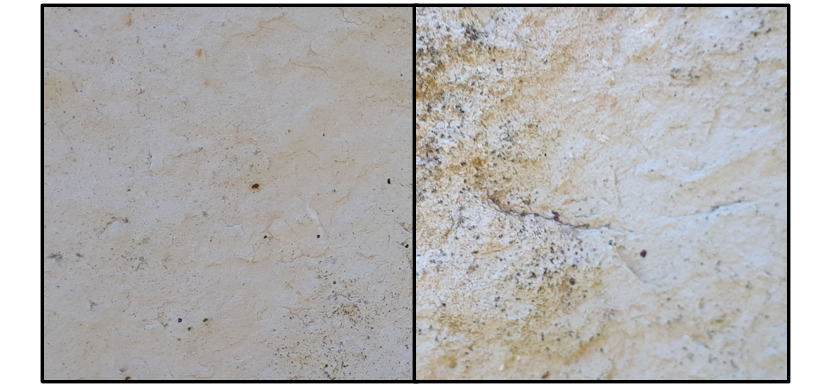
- La partie sommitale est une formation métrique de pierre meulière alvéolaire et spongieuse.
Sa couleur est très variable, due à des argiles bariolées dont les couleurs peuvent aller du blanc au rougeâtre en passant par le jaune.

► Formation g2b : Les Grès de Fontainebleau
Pour rappel, la classification d'un grès, roche sédimentaire détritique, se fait au regard de la taille des sédiments cimentés (taille des grains <2mm).
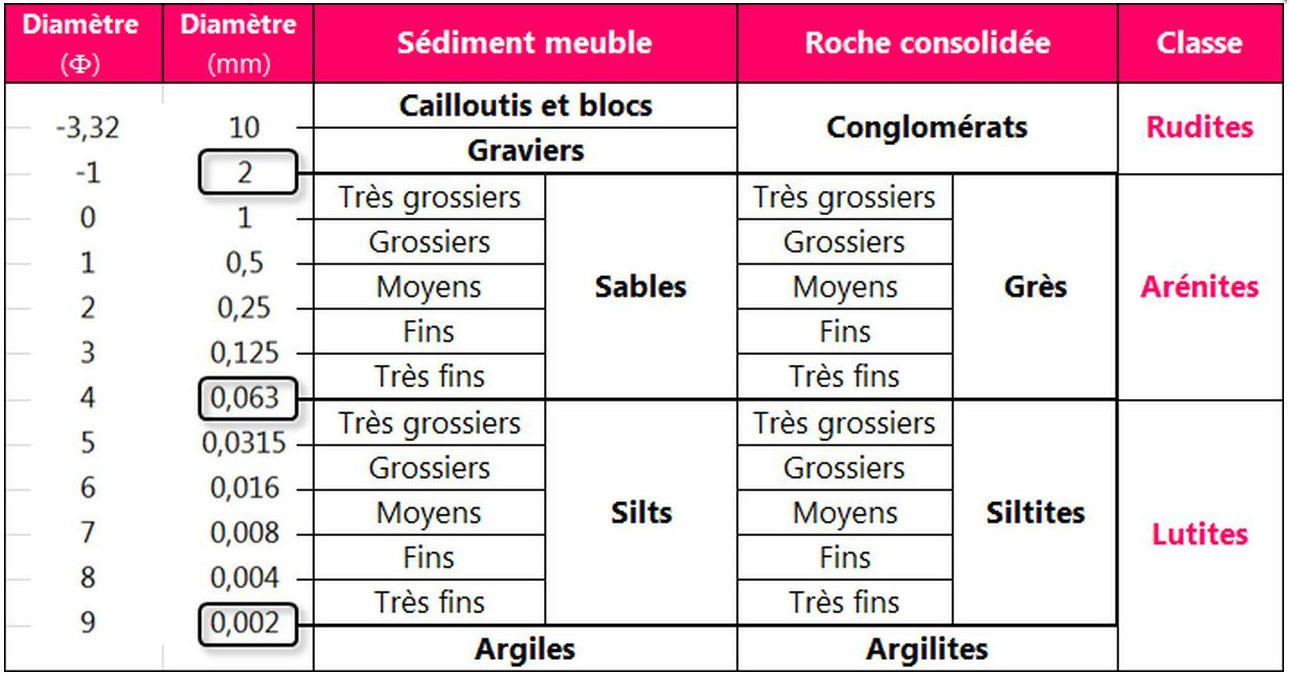
Le grès de Fontainebleau a une origine atypique et récente dans l'histoire géologique.
Il s'agit d'une formation secondaire issue de la cimentation par endroits des sables de Fontainebleau lors d'un phénomène d'altération de subsurface pendant les dernières périodes glaciaires.
Les sables de Fontainebleau sont une formation puissante (jusqu'à 75 mètres d'épaisseur) mise en place au Stampien.
Au Plio-Quaternaire, la mise à l'affleurement de certaines zones de ces sables du fait de l’incision des vallées et du plateau de Beauce a entraîné la grésification de ces zones.
Les grains de sables ont baignés dans une nappe phréatique ayant des éléments siliceux en suspension.
Les fortes variations du niveau de l'eau (cycles "inondations et assèchements") ont conduit en subsurface à la précipitation de la silice dans la zone d’écoulement de la nappe, consolidant les sables en dalles de grès.

La structure et la coloration du grès va dépendre de celle des sables d'origine.
Ceux de Fontainebleau sont des sables fins (taille médiane de 0,10 à 0,15 mm) de couleur variable, mais principalement ocre à roux, teinte due à une contamination par les eaux pluviales ou des nappes alluviales en ions ferriques.
Cela va donc donner un grès à grains fins de couleur initialement jaune ocre, mais qui va pouvoir se doter d'une cuirasse ferrugineuse de couleur rouge rouille suite à un phénomène de rubéfaction (oxydation du Fer en oxydes ferriques FeO3 à l'air libre).

► Local geological context
The hillside overlooking Marcoussis on the north side is made up of two detrital sedimentary formations put in place in the upper Stampien (-35 Ma) during a marine transgression.
These two formations were the object of quarrying operations on this hill, exposing vast blocks of which it is possible today to observe the peculiarities.
► Formation g3a: The millstones of Montmorency
This hard summit formation covers the sands and sandstones of Fontainebleau and protects them from erosion. It is mainly made up of two sets of millstones.
The millstone is a siliceous sedimentary rock with irregular silicification of limestones.
It is extremely strong because it is very rich in silica, insensitive to weathering by rainwater, waterproof and porous.
It can be massive (compact millstone) or alveolar (cavernous millstone formed by dissolution of limestone), these two types being present on the slopes of Marcoussis:
- At the base is a first layer of 2 meters of power made of compact millstones, of a homogeneous gray-white color and very fine texture (soft to the touch).
- The top part is a metric formation of alveolar and spongy millstone.
Its color is very variable, due to variegated clays whose colors can range from white to reddish through yellow.
► Formation g2b : Les Grès de Fontainebleau
As a reminder, the classification of a sandstone, a detrital sedimentary rock, is based on the size of the cemented sediments (grain size <2mm).
The Fontainebleau sandstone has an atypical and recent origin in geological history.
It is a secondary formation resulting from the cementing in places of the sands of Fontainebleau during a phenomenon of subsurface alteration during the last ice ages.
The sands of Fontainebleau are a powerful formation (up to 75 meters thick) set up in Stampien.
In the Plio-Quaternary, the outcrop of certain areas of these sands due to the incision of the valleys and the Beauce plateau led to the gresification of these areas.
The grains of sand were bathed in a water table having siliceous elements in suspension.
Strong variations in the water level ("flooding and drying" cycles) led to the precipitation of silica in the subsurface area of the water table, consolidating the sands into sandstone slabs.
The structure and coloring of the sandstone will depend on that of the original sands.
Those of Fontainebleau are fine sands (median size 0.10 to 0.15 mm) of variable color, but mainly ocher to red, color due to contamination by rainwater or alluvial layers of ferric ions.
This will therefore give a fine-grained sandstone initially yellow ocher, but which will be able to acquire a ferruginous armor of rust-red color following a reddening phenomenon (oxidation of iron to ferric oxides FeO3 in the open air).
► Sources bibliographiques / Bibliographical sources
Les Questions / The Questions
Questions pour valider :"Grès et Pierres Meulières à Marcoussis"
Questions to validate: "Sandstone and Grindstone in Marcoussis"
- Question 0 : Prenez une photo de vous ou d'un élément vous appartenant sur le site.
Cette photo devra au choix nous être transmise avec les réponses ou être ajoutée à votre log.
-Question 0 : Take a photo of yourself or something you own on the site.
This photo must either be sent to us with the answers or added to your log.
Point 1 : N 48° 38.788 E 002° 13.751
Vous voici devant un bloc sous la zone rouge de la photo WP1.
Here you are in front of a block under the red zone of photo WP1.

- Question 1 : Décrivez ce bloc (couleur, taille des grains, texture, dureté). Déduisez-en sa nature.
- Question 1: Describe this block (color, grain size, texture, hardness). Deduce its nature.
- Question 2 : Notez la différence de couleur entre la surface du bloc en cassure fraîche et celle plus ancienne. Nommez et décrivez le phénomène à l'origine de ce changement de couleur.
- Question 2: Note the difference in color between the surface of the block in fresh fracture and the older one. Name and describe the phenomenon causing this color change.
Point 2 : N 48° 38.773 E 002° 13.761
Vous voici devant un second bloc sous la zone bleue de la photo WP2.
Here you are in front of a second block under the blue area of photo WP2.
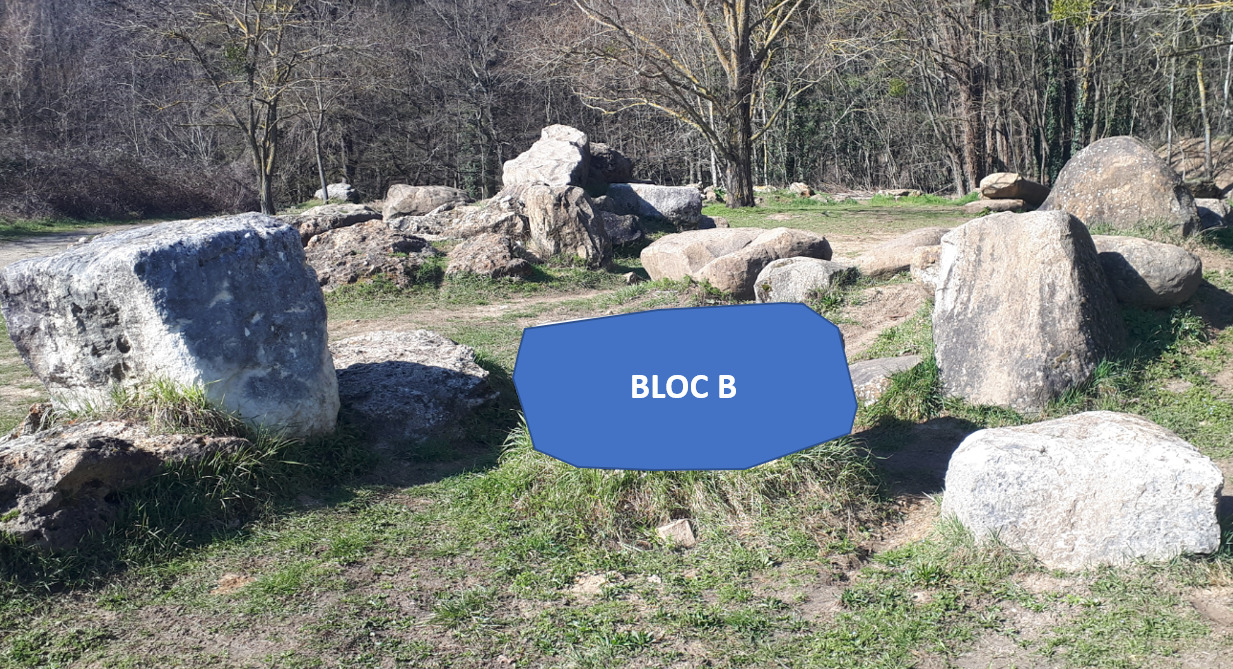
- Question 3 : Décrivez ce bloc et déduisez-en sa nature et son type.
- Question 3: Describe this block and deduce its nature and type.
Point 3 : N 48° 38.787 E 002° 13.740
Vous voici devant un troisième bloc sous la zone verte de la photo WP3.
Here you are in front of a third block under the green zone of photo WP3.
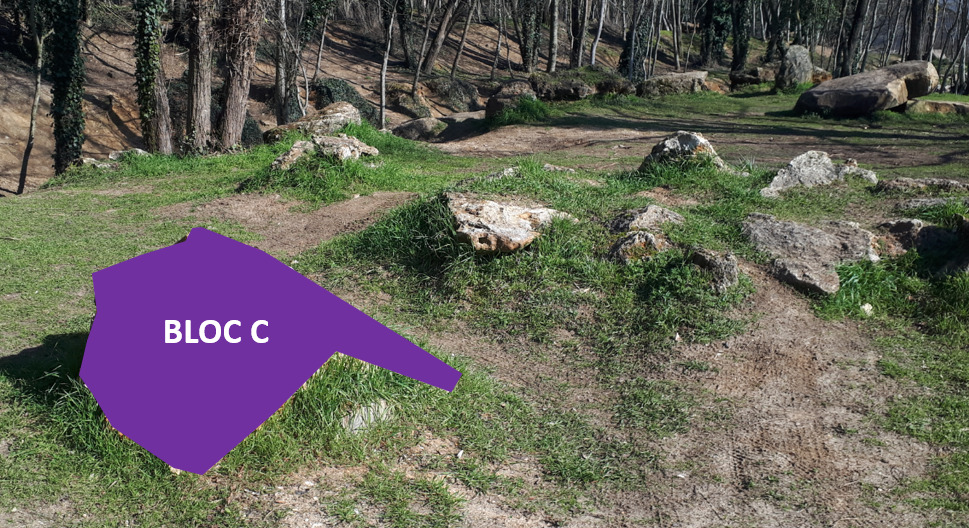
- Question 4 : Décrivez ce bloc et déduisez-en sa nature et son type.
- Question 4 : Describe this block and deduce its nature and type.
- Question 5 : Vous notez une variation importante de couleur. Quel matériel est à l'origine de cette coloration ?
- Question 5 : You notice a significant variation in color. What material is at the origin of this coloring?
Vous pouvez vous loguer sans attendre notre confirmation,
mais vous devez nous envoyer les réponses en même temps soit par mail via notre profil (
fafahakkai), soit via la messagerie geocaching.com (Message Center).
S'il y a des problèmes avec vos réponses nous vous en ferons part.
Les logs enregistrés sans réponses seront supprimés.
You can log this cache without waiting for our confirmation, but you must send us the answers at the same time, by e-mail via our profile (fafahakkai) or by the system of Message Center of geocaching.com.
If there is a problem with your answers we will notify you. The logs recorded without answers will be deleted.
Rappel concernant les « Earthcaches »: Il n'y a pas de conteneur à rechercher ni de logbook à renseigner. Il suffit de se rendre sur les lieux, de répondre aux questions ci-dessus et de nous renvoyer les réponses.
Reminder concerning "Earthcaches": there is neither a container to look for nor a logbook to sign. One need only go to the location, answer to the differents questions and send us the answers.